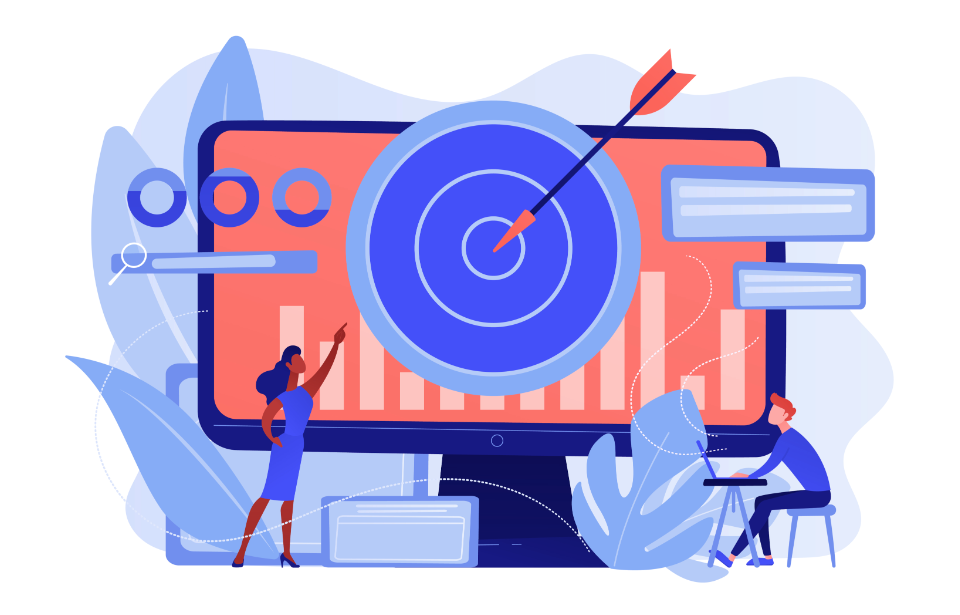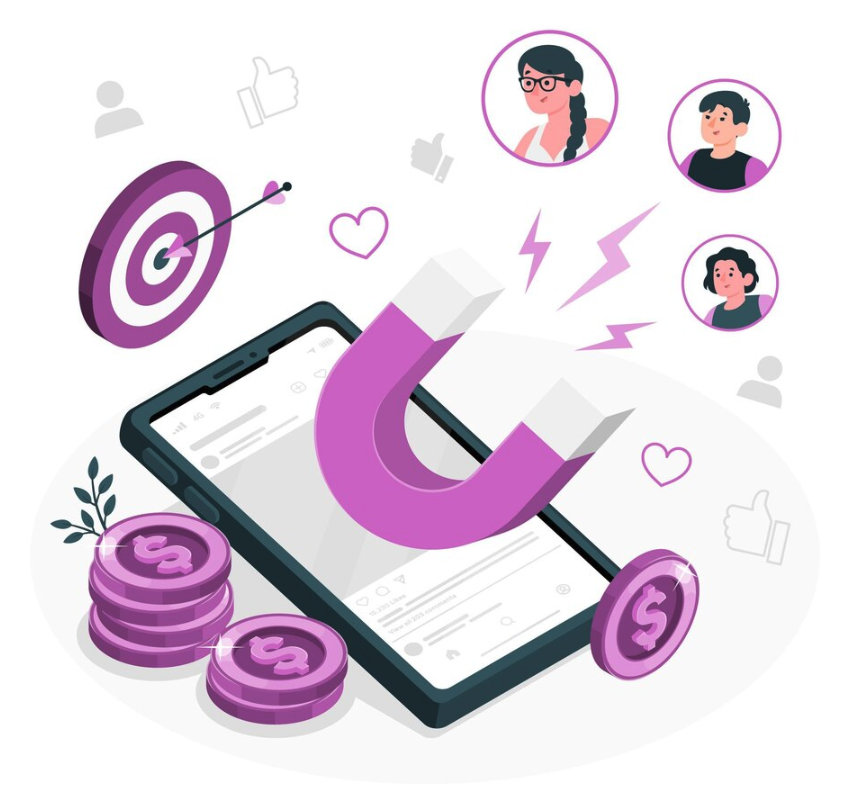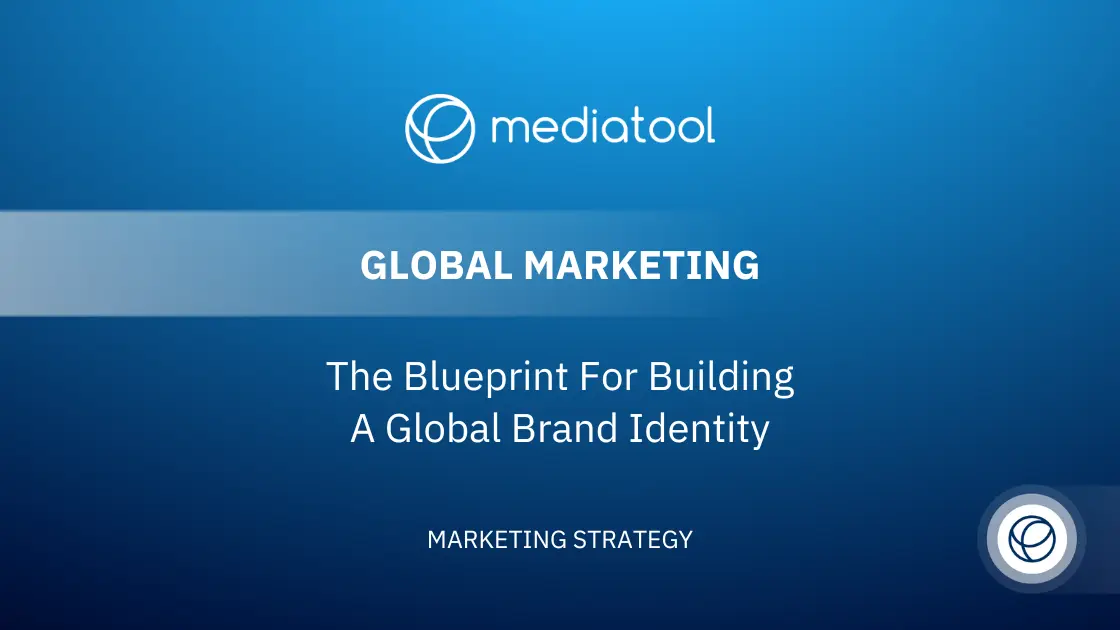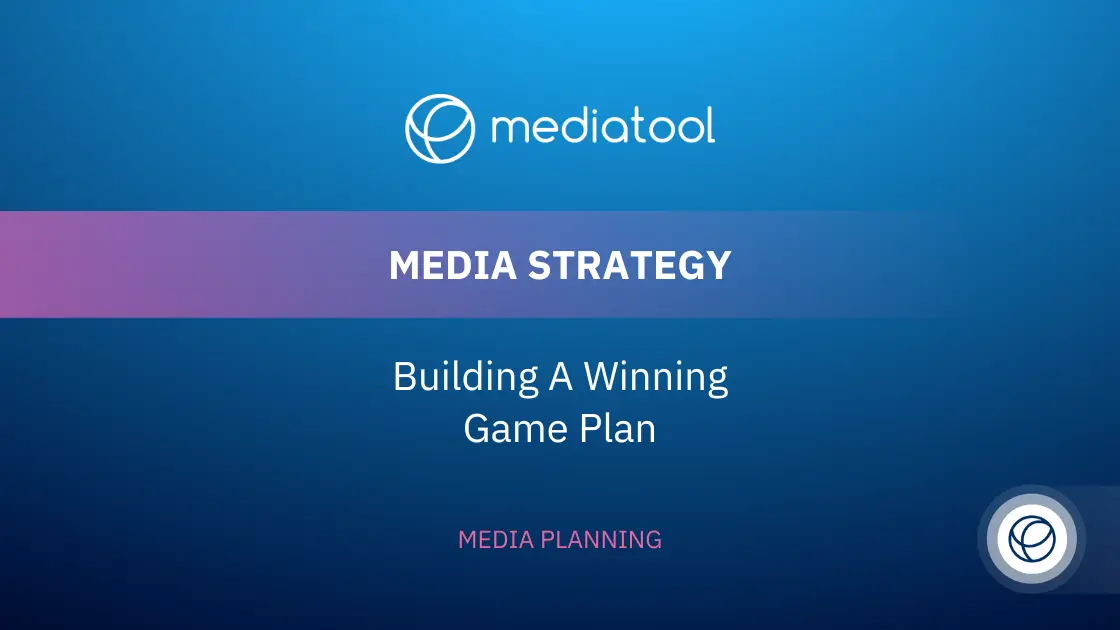Our top retargeting strategies to drive conversions.
Watching website visitors drop off just as they’re on the brink of making a purchase can be incredibly frustrating. Fortunately, there’s a strategy to re-engage these nearly-converted website visitors: retargeting.
This technique is an excellent way to reconnect with individuals who have previously visited or interacted with your site.
By utilizing data such as email addresses, cookie tracking, or even an abandoned shopping cart, you can develop retargeting campaigns specifically designed to draw these visitors back and guide them further down the marketing funnel.
Retargeting involves running an online ad campaign targeting specific users, focusing on those who have had certain interactions with your brand. It’s a highly effective method for capturing sales that initially didn’t materialize.
However, the key to its success lies in targeting a highly specific audience based on their past interactions.
Without any delay, let’s dive into our top four retargeting strategies that are sure to inspire and drive conversions.
1. Understanding Your Audience: The Cornerstone of Retargeting Ads
Classifying Your Audience: The First Step in a Successful Retargeting Strategy
First things first, let’s break down your visitors into categories. Are they just casual browsers? Or are they serious shoppers who left items in their cart?
This classification is crucial in your retargeting campaign. It’s the heart of your digital marketing strategy.
By segmenting your website visitors, you create a foundation for targeted ads that hit the mark.
Leveraging Digital Tools for Insightful Audience Analysis
Next up, let’s talk tools. Facebook pixel, list-based retargeting, Google Analytics — these are the spyglasses through which you can view your audience’s online behavior. This isn’t just about who visited your website; it’s about understanding their journey.
Did they spend time on specific landing pages?
Did they check out your online store but leave without buying?
These insights are gold for crafting your retargeting ads.
Creating Dynamic Retargeting Ads for Different Audience Segments
Now, with all this data, you’re ready to create retargeting ads that resonate. Think dynamic retargeting ads for your social media buffs, and maybe more direct email retargeting for those who aren’t as active online. Tailor your ad copy to speak to each segment of your target audience.
Remember, the goal is to drive traffic back to your site, not just any traffic, but traffic that converts.
Utilizing Facebook Retargeting for Enhanced Engagement
Don’t underestimate the power of Facebook retargeting campaigns. With just a few clicks in the Facebook Ads Manager, you can tap into a custom audience that’s just waiting to be re-engaged. This is where your facebook retargeting campaign and strategy aligns perfectly with your marketing goals.
Facebook retargeting isn’t just about bombarding users with ads; it’s about reminding them why they visited your site in the first place.
The Art of Retargeting
Understanding your audience is the first critical step in any successful retargeting campaign. It’s about using the right tools to gather insights and crafting ads that speak directly to your potential customers.
Whether it’s through dynamic ads, email retargeting, or social media platforms, the aim is always the same: convert those site visitors into happy customers.
So, dive into your data, understand your audience, and watch your retargeting efforts flourish!
2. Specific Interactions: The Key to Effective Retargeting Campaigns

Targeting Based on Page Visits and Shopping Behavior
Let’s dive deeper into the power of specificity in your retargeting campaigns. Imagine a user who’s visited the landing pages of your top products or left a full cart behind. These actions are like digital footprints, telling you exactly where their interests lie.
With Facebook retargeting campaigns, you can retarget users with incredible precision.
It’s not just about who visited your website; it’s about understanding their specific interaction. Did they linger on a particular product page? Did they add items to their cart on your online store but didn’t check out? These insights are invaluable for creating effective retargeting ads.
Harnessing the Power of Facebook Pixel for Precision Targeting
Facebook Pixel is like a detective, gathering clues on your potential customers. It allows you to track user behavior across your site, giving you the data you need for pixel-based retargeting. With this tool, you can create retargeting ads that target users based on their actions.
Facebook Pixel helps you understand your website traffic on a deeper level, enabling you to retarget audiences with ads that are more likely to convert.
Retargeting Ads That Resonate with User Interests
Now, let’s talk about crafting your retargeting ad. It’s not just an empty retargeted ad; it’s a message that says, “We know what you’re looking for.” Use the insights from user behavior to create dynamic retargeting ads that resonate.
If they’ve shown interest in a specific product, retarget them with ads for that product or related items. Your ad copy should speak directly to their interests, reminding them of what they viewed and enticing them back.
Effective Use of Ad Spend in Retargeting
Retargeting campaigns are all about maximizing your ad spend. By targeting specific interactions, you’re not casting a wide net and hoping for the best. You’re spending your budget on targeting users who have already shown interest in your products.
This targeted approach ensures your ad spend is used effectively, driving traffic back to your site and boosting your chances of conversion.
Turning Browsers into Buyers
The key lies in focusing on specific interactions. It’s about using tools like Facebook Ads Manager and Facebook Pixel to create targeted, dynamic ads that speak to the interests of your potential customers.
By understanding and targeting these specific interactions, you can turn browsers into buyers, making your retargeting campaigns more effective and your digital marketing efforts more successful.
3. Beyond Images: Diversifying Your Retargeting Ad Content
Expanding Content Types in Retargeting Ads
Why limit yourself to just images when the world of content is so vast? In the realm of retargeting ads, diversifying your approach can significantly boost engagement. Incorporate a mix of content types like informative blog posts, engaging videos, and live demos, especially for your online store.
This variety not only captivates your audience but also educates them, increasing the chances of converting website visitors into customers.
Leveraging Video and Interactive Content for Engagement
Videos are a game-changer in retargeting marketing. They can showcase your products in action or provide helpful tutorials. But why stop there? Interactive content like quizzes or polls can also drive engagement, offering a more dynamic way to connect with your target audience.
These content types make your retargeted ads stand out and keep your brand at the forefront of potential customers’ minds.
Utilizing Social Media Platforms for Dynamic Ads
Social media platforms are your allies in the retargeting battle. Platforms like Facebook are ideal for launching dynamic retargeting ads that can adapt to user behavior. Use Facebook retargeting ads to target people based on their previous interactions with your site.
These dynamic ads act as conversion magnets, drawing in users who have already shown interest in your brand.
Creating a Cohesive Retargeting Strategy Across Platforms
A successful retargeting campaign is cohesive across various platforms. Whether it’s Facebook retargeting campaigns, email retargeting, or list-based retargeting, ensure your message and content type are consistent.
Your ad copy should be tailored to each platform and custom audience, while maintaining a unified marketing goal. Track user behavior across these platforms to refine your retargeting strategy, ensuring your message resonates with your targeted custom audience.
Incorporating Pixel-Based Retargeting for Precision
Pixel-based retargeting is an essential tool in your digital marketing arsenal. It allows you to create retargeting ads based on specific actions users have taken on your site, like visiting certain landing pages or browsing your online store.
This precision helps in targeting users who are more likely to convert, ensuring your ad spend is used effectively.
Crafting a Multi-Faceted Retargeting Campaign
Diversifying your retargeting ad content is key to creating an effective retargeting campaign. By combining different types of retargeting content and leveraging the power of social media and pixel-based retargeting, you can create a campaign that not only targets the right audience but also engages them on a deeper level.
It’s all about understanding your audience, their preferences, and how they interact with your brand, then using that knowledge to drive traffic and conversions.
4. Retargeting Existing Customers: Don’t Leave Money on the Table

Fostering Loyalty with Retargeting Strategies
Your existing customers are a goldmine that’s often overlooked. They’ve already chosen you once, so why not remind them to do it again? This is where retargeting strategies come into play. It’s more than just pushing sales; it’s about nurturing a relationship.
Use retargeting campaigns to show your ongoing appreciation and to target people to keep your brand fresh in their minds.
Utilizing Facebook Retargeting for Customer Engagement
Let’s tap into Facebook retargeting for this. With Facebook retargeting campaigns, you can reach out to your existing customer list, reminding them of your brand’s value. The beauty of Facebook retargeting ads lies in their ability to target audiences based on past interactions. It’s a powerful tool for customer list retention.
And hey, a well-placed retargeting ad on social media platforms can rekindle their interest in your products.
Personalized Email Retargeting Campaigns
Email retargeting is another avenue to explore. Tailor your ad copy to speak directly to your existing customers. Show them new products, offer exclusive deals, or give them a sneak peek into upcoming launches.
This kind of personalized attention turns a standard email retargeting campaign into a customer experience that resonates and retains.
Leveraging Pixel-Based Retargeting for Precision
Pixel-based retargeting is perfect for targeting users who have visited specific pages of your online store.
Use this data to create dynamic retargeting ads that showcase products they’ve shown interest in or complementary items. This tactic not only increases website traffic but also enhances the chances of upselling and cross-selling.
Driving Repeat Business Through Smart Retargeting
Remember, retargeting works not just by driving traffic but by driving the right kind of traffic. Your existing customers are familiar with your brand; they just need a little nudge.
With list-based retargeting, you can segment your customers and create custom audiences, based on their purchase history and preferences, creating targeted ads that are relevant to them.
Turning Retargeting into Revenue
Don’t miss out on the opportunity to retarget customers. They are an essential part of your sales funnel and key to your campaign goals.
By using a Facebook retargeting strategy, email campaigns, and pixel-based retargeting effectively, you can turn your existing customer base into a reliable source of revenue.
It’s all about using the right retargeting strategies and tailoring your ads to maintain the relationship and keep your brand top of mind.
5. BONUS STRATEGY – Continuous Optimization: Fine-Tuning Your Retargeting Efforts for Maximum Impact
Analyzing and Adjusting Your Retargeting Campaigns
The world of online advertising is ever-changing, and so should your retargeting strategies. Continuous optimization is the secret sauce to successful retargeting campaigns. Don’t just set it and forget it; analyze the performance of your retargeting ads and make necessary adjustments.
Are your Facebook retargeting ads reaching the right target audience?
Is your pixel-based retargeting capturing all necessary user behavior on your landing pages?
These are the questions that can drive your campaign to success.
Leveraging A/B Testing for Effective Ad Campaigns
A/B testing is a powerful tool in your retargeting arsenal. Create different versions of your retargeting ad – change up the ad copy, the images, or the call to action – and see which version drives more conversions.
This testing can apply to all aspects of your campaign, from your Facebook retargeting strategy to your email retargeting efforts.
It’s all about finding what resonates best with your target audience and capitalizing on it.
Retargeting Across Various Platforms for Comprehensive Coverage
Don’t limit your retargeting campaigns to just one platform. Spread your wings across various social media platforms and the search network.
Each platform offers unique advantages – Facebook retargeting is great for custom audiences, while Google’s search network can help you retarget users based on their search behavior.
By creating retargeting campaigns that span across these platforms, you increase your reach and the likelihood of re-engaging prospective customers.
Fine-Tuning Your Marketing Technique for Better ROI
Every dollar spent in your retargeting campaign should be an investment towards a better return.
This is where your marketing technique plays a crucial role. Track the performance of your retargeting ads, measure the website traffic they drive, and monitor the sales funnel to see how effectively they convert site visitors into customers.
Use these insights to fine-tune your approach, ensuring that your retargeting work really does work.
Mastering the Art of Retargeting
Retargeting is a powerful tool in your digital marketing toolkit, but it’s not a one-size-fits-all solution. To truly master retargeting and see your conversion campaigns soar, you must be willing to continuously optimize, test, and adjust your strategies.
Whether it’s through Facebook ads, page promotions, pixel-based targeting on your ecommerce stores, or creating diverse ad content, the ultimate goal is to retarget users effectively and convert those clicks into loyal customers. So, are you ready to dive deep and master the art of retargeting?
Ready to Boost Your Conversions?

Harnessing the Full Potential of Retargeting Strategies
There you have it – a comprehensive guide to retargeting strategies that can revolutionize your digital marketing efforts and achieve your campaign goals. The world of retargeting ads offers limitless potential.
Whether it’s crafting dynamic retargeting ads, diving into Facebook retargeting campaigns, or leveraging pixel-based retargeting to target specific site visitors, the possibilities for boosting your ad campaign are endless.
Engaging Your Audience with Facebook Retargeting
With just a few clicks in your Facebook Ads Manager, you can launch a Facebook retargeting campaign that targets potential customers who have visited your website or interacted with your brand on social media platforms.
Facebook retargeting ads allow you to reconnect with this audience, turning website visits into valuable conversions.
Creating Customized Retargeting Ads for Every Customer
But why stop at standard ads? Use your insights to also create retargeting campaigns and ads that resonate with each segment of your target audience. From users who browsed your online store without making a purchase to those who just need a gentle reminder, tailor your retargeting ad to fit their unique needs and interests.
Remember, a well-targeted ad is a retargeted ad that works.
Maximizing Efficiency with Advanced Retargeting Techniques
Utilize advanced techniques like list-based retargeting and pixel-based retargeting to refine your approach.
Track user behavior across landing pages and specific pages they visited, then use that data to create dynamic ads and retargeted ads that speak directly to them.
Your existing customers and potential customers alike will appreciate the personalized touch.
Optimizing Ad Spend and Tracking Campaign Performance
Retargeting is not just about creating ads; it’s about strategic digital marketing. Optimize your ad spend by targeting the right people with the right message. Use tools like the Facebook pixel to gather data on how retargeting works for your brand, then adjust your retargeting strategy to align with your marketing goals and campaign goals.
Conclusion: Turning Clicks into Customers
Retargeting offers a powerful way to drive traffic, engage with your audience, and convert site visitors into loyal customers. Whether you’re running a remarketing campaign, campaigns on social media platforms or using email retargeting to reach your audience, the key is to use retargeting marketing techniques effectively.
Without a thorough understanding of how users interact with your brand, retargeting campaigns can fall short of their potential.
This is where the integration of all marketing data into a single, accessible platform, like Mediatool, becomes invaluable. It allows for a comprehensive view of user interactions, paving the way for retargeting strategies that are more likely to convert.
With Mediatool, users gain the advantage of tracking their campaign performance in real-time, aligning it seamlessly with their broader marketing goals. The platform also offers tools that facilitate team collaboration, enabling efficient campaign planning, execution, and budget management, all within a unified environment.
This integrated approach not only simplifies the process of creating dynamic retargeting ads but also enhances the effectiveness of the entire digital marketing strategy
So, are you ready to watch your conversion campaigns soar? Dive into the world of retargeting and discover how you can transform browsers into buyers, just a few clicks away.





